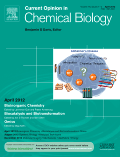
CURRENT OPINION IN CHEMICAL BIOLOGY
Scope & Guideline
Fostering Scholarly Dialogue in Biochemistry
Introduction
Aims and Scopes
- Chemical Biology Techniques and Tools:
The journal extensively covers innovative methodologies in chemical biology, including chemical synthesis, bioconjugation, and imaging techniques that facilitate the understanding of complex biological systems. - Interdisciplinary Research:
It emphasizes research at the intersection of chemistry and biology, highlighting studies that integrate principles from both disciplines to address biological questions and challenges. - Therapeutic Applications:
There is a consistent focus on the development and application of chemical biology tools and strategies in therapeutic contexts, particularly in drug discovery, cancer treatment, and immunotherapy. - Metabolomics and Glycobiology:
CURRENT OPINION IN CHEMICAL BIOLOGY showcases significant research in metabolomics and glycobiology, exploring the roles of metabolites and glycans in biological processes and disease mechanisms. - Synthetic Biology Innovations:
The journal features advancements in synthetic biology, including the design of synthetic pathways, engineered organisms, and novel biomolecular systems, highlighting their potential in biotechnology and medicine.
Trending and Emerging
- Artificial Intelligence and Machine Learning in Chemical Biology:
There is a growing trend towards the application of AI and machine learning techniques for drug discovery, protein structure prediction, and analyzing complex biological data, highlighting the integration of computational tools in chemical biology. - Metabolomics and Functional Metabolite Research:
Research in metabolomics is expanding, with a focus on understanding metabolic pathways and their roles in health and disease, emphasizing the need for comprehensive metabolomic profiling. - Chemical Probes and Bioorthogonal Chemistry:
The use of chemical probes for studying biological processes and the development of bioorthogonal reactions are gaining traction, enabling scientists to investigate cellular dynamics in real-time. - Immunotherapy and Targeted Therapies:
There is an increasing emphasis on immunotherapeutic strategies and targeted therapies, with research focusing on the engineering of antibodies and small molecules to enhance treatment efficacy against various diseases. - Synthetic Biology Applications in Medicine:
Emerging research in synthetic biology is centered on developing engineered living systems and biomolecular tools for therapeutic applications, showcasing the potential of synthetic biology in addressing complex biological challenges.
Declining or Waning
- Traditional Drug Discovery Methods:
There is a noticeable decrease in publications focusing on conventional drug discovery techniques, as the field shifts towards more innovative and integrated approaches, such as personalized medicine and systems biology. - Basic Enzyme Mechanisms:
While foundational research in enzyme mechanisms remains important, the emphasis on purely mechanistic studies has diminished in favor of more application-oriented research that translates findings into therapeutic contexts. - Single-Target Approaches in Drug Development:
Research focusing solely on single-target drug development is declining as the field increasingly recognizes the complexity of biological systems and the need for multi-target or systems-level approaches.
Similar Journals
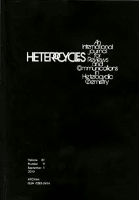
HETEROCYCLES
Bridging Gaps in Drug Discovery and DevelopmentHETEROCYCLES, published by the Japan Institute of Heterocyclic Chemistry, stands as a pivotal journal within the fields of Analytical Chemistry, Organic Chemistry, and Pharmacology. With its ISSN 0385-5414 and E-ISSN 1881-0942, HETEROCYCLES has been a respected platform for scholarly work since its establishment in 1983, featuring innovative research up until 2022. While currently not open access, the journal is renowned for its rigorous peer-review process, ensuring the dissemination of high-quality research. Despite its Q4 ranking in the 2023 quartiles for its categories, it plays a crucial role in bridging gaps in knowledge and advancing the discourse on heterocyclic compounds, which are vital in drug discovery and development. Researchers, professionals, and students who are engaged in chemistry and pharmacology will find HETEROCYCLES an essential source of cutting-edge studies, insights, and an opportunity to contribute to the evolving landscape of these scientific fields.
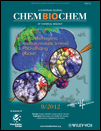
CHEMBIOCHEM
Pioneering insights in molecular biology and beyond.CHEMBIOCHEM is a premier interdisciplinary journal published by WILEY-V C H VERLAG GMBH, dedicated to advancing knowledge in the fields of Biochemistry, Molecular Biology, Molecular Medicine, and Organic Chemistry. With an impactful presence since its inception in 2000 and a convergence through to 2024, the journal has established itself as a vital resource for researchers, professionals, and students alike, evidenced by its notable quartile rankings in 2023—Q2 in Biochemistry, Molecular Biology, and Molecular Medicine, and Q1 in Organic Chemistry. While it does not currently offer Open Access options, CHEMBIOCHEM remains a respected platform for disseminating high-quality research, reflected in its Scopus rankings, where it holds a credible position in various chemistry categories. By fostering innovative studies and discussions, CHEMBIOCHEM aims to contribute to the understanding and advancement of biochemical and molecular principles critical to contemporary science and healthcare.

MOLECULAR & CELLULAR PROTEOMICS
Innovating the future of molecular and cellular studies.MOLECULAR & CELLULAR PROTEOMICS, published by Elsevier, stands as a premier journal in the fields of Biochemistry, Analytical Chemistry, and Molecular Biology, with a distinguished Q1 ranking reflecting its high impact and contribution to the scientific community. Established in 2002, this journal has consistently provided a platform for the latest research in protein science, merging molecular biology with advanced analytical techniques. With impressive Scopus rankings—41st in Biochemistry and 16th in Analytical Chemistry—it caters to an audience of researchers, professionals, and students eager to explore cutting-edge developments in proteomics. Although currently not designated as open access, the journal aims to foster knowledge dissemination through accessible research content. As it continues to evolve until 2024, MOLECULAR & CELLULAR PROTEOMICS is essential for anyone passionately engaged in the ever-expanding field of proteomics.

Annual Review of Biochemistry
Pioneering Reviews for the Biochemical CommunityAnnual Review of Biochemistry is a premier publication in the field of biochemistry, renowned for its comprehensive and critical reviews that collate significant advancements and insights since its inception in 1946. Published by Annual Reviews in the United States, this journal maintains a prestigious position within the academic community, boasting a Q1 ranking in the biochemistry category for 2023, with an impressive Scopus rank of #4 out of 438, placing it in the top 1% of its field. With a commitment to excellence, it serves as an essential resource for researchers, professionals, and students striving to stay at the forefront of biochemical research. While the journal does not operate on an open-access model, it continues to provide key insights and knowledge that fuel innovation and discovery in the life sciences. As it converges research from various eras up to 2024, Annual Review of Biochemistry remains a vital contributor to the development of molecular biology and genetics, catering to the needs of a diverse readership keen on advancing their understanding and expertise in biochemistry.
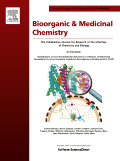
BIOORGANIC & MEDICINAL CHEMISTRY
Transforming Therapeutics with Cutting-Edge ChemistryBIOORGANIC & MEDICINAL CHEMISTRY, published by Pergamon-Elsevier Science Ltd, is a prominent journal in the fields of biochemical research and drug discovery, with an ISSN of 0968-0896 and an E-ISSN of 1464-3391. Established in 1993, it has garnered respect and recognition, evidenced by its categorization in various quartile ranks across 2023, including Q2 in Clinical Biochemistry and Pharmaceutical Science. It holds significant Scopus rankings, placing it in the 75th percentile in Pharmaceutical Science and 74th percentile in Organic Chemistry, highlighting its influential contributions to ongoing research and developments. This journal provides a platform for disseminating advancements in bioorganic and medicinal chemistry, focusing on innovative methodologies, therapeutic advancements, and molecular pharmacology. Although it does not follow an open-access model, it remains a key resource for researchers, professionals, and students aiming to stay at the forefront of scientific discovery in the UK and beyond. The journal’s commitment to enhancing knowledge within the biomedical community makes it an essential read for those passionate about this dynamic field.

Mini-Reviews in Organic Chemistry
Illuminating Trends in Organic Chemistry Research.Mini-Reviews in Organic Chemistry, published by Bentham Science Publishers, is an esteemed journal in the field of organic chemistry, dedicated to presenting concise, thoughtful reviews that encapsulate the rapid advancements in this dynamic area of study. Since its inception in 2005, the journal has become a valuable resource for researchers, professionals, and students interested in the latest developments and trends, featuring an HIndex indicative of its scholarly impact. With its 2023 Scopus ranking placing it in the 52nd percentile and categorized as Q3 in Organic Chemistry, it offers insights that bridge the gap between fundamental research and practical applications. While not an open-access journal, it provides significant access options for institutional journals and library systems. Situated in the United Arab Emirates, Mini-Reviews in Organic Chemistry continues to serve as a beacon for innovation and knowledge dissemination in organic chemistry, ensuring that its audience remains at the forefront of scientific discovery.
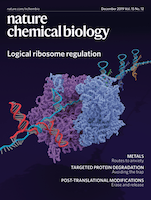
Nature Chemical Biology
Exploring the Intersection of Chemistry and Biology.Nature Chemical Biology is a prestigious academic journal published by NATURE PORTFOLIO, specializing in the interdisciplinary field of chemical biology. With an impressive impact factor and consistently ranked in the Q1 category for both Cell Biology and Molecular Biology, this journal serves as a vital platform for disseminating groundbreaking research and innovative methodologies. Covering a broad spectrum of topics that integrate the principles of chemistry and biology, it is particularly essential for researchers and professionals dedicated to understanding the molecular mechanisms of life. The journal is renowned for its rigorous peer-review process and high visibility, which contribute to its ranking of 14th in Molecular Biology and 17th in Cell Biology according to Scopus, placing it in the top percentiles of its fields. While open access options are limited, the journal remains a critical resource for students and academics striving to stay at the forefront of chemical biology research, from its inception in 2005 through to its convergence in 2024. By facilitating the exchange of knowledge and ideas, Nature Chemical Biology continues to shape the future of science and innovation.
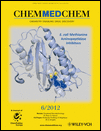
ChemMedChem
Innovating drug discovery through interdisciplinary collaboration.ChemMedChem is a leading international journal published by WILEY-V C H VERLAG GMBH in the United Kingdom, specializing in the interdisciplinary fields of medicinal chemistry and drug discovery. With a commendable impact factor that places it in the Q1 quartile for Organic Chemistry and among the Q2 ranks in several other key categories including Biochemistry, Molecular Medicine, and Pharmacology, ChemMedChem serves as a vital platform for the dissemination of innovative research and transformative insights in the development of pharmaceutical agents. Since its inception in 2006, this journal has been at the forefront of advancing knowledge that bridges the gap between fundamental research and practical applications in medicine, making it an essential resource for researchers, professionals, and students alike. Although it currently does not offer Open Access options, the journal ensures high-quality peer-reviewed content that engages its audience and fosters collaborative scientific discourse.
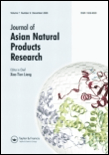
JOURNAL OF ASIAN NATURAL PRODUCTS RESEARCH
Pioneering Discoveries in Natural MedicinesJOURNAL OF ASIAN NATURAL PRODUCTS RESEARCH is a prestigious publication in the field of natural products, focusing on valuable research spanning analytical chemistry, pharmacology, and complementary medicine. Published by Taylor & Francis Ltd in the United Kingdom, this journal has established itself as a key resource for academics and professionals seeking to explore advancements in drug discovery and organic chemistry. With a converged publication timeline from 1998 to 2024, the journal boasts several commendable category quartiles as of 2023, reflecting its robust standing in the research community: Q2 in Complementary and Alternative Medicine, Q3 in multiple domains including Analytical Chemistry and Organic Chemistry, and Q4 in Molecular Medicine. Although it currently does not offer open access, the journal remains a valuable compendium for empirical research and innovative studies in areas such as pharmacology and medicinal chemistry. Researchers, professionals, and students alike will find the JOURNAL OF ASIAN NATURAL PRODUCTS RESEARCH to be an essential platform for sharing groundbreaking findings and fostering collaborations that lead to significant advancements in science and health.
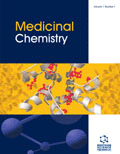
Medicinal Chemistry
Transforming drug development with insightful findings.Medicinal Chemistry is a prestigious journal published by Bentham Science Publishers Ltd, dedicated to advancing the field of drug discovery and development. Established in 2005 with a converged publication timeframe extending to 2024, this journal serves as a vital resource for researchers and professionals interested in the intricate processes of medicinal chemistry, pharmacology, and toxicology. With an ISSN of 1573-4064 and an E-ISSN of 1875-6638, it has established a notable presence in the academic community, currently positioned in Q3 of Drug Discovery category according to the 2023 quartiles. The journal's ranking in Scopus places it at 90 out of 157 in its field, showcasing its impact and relevance, with a percentile standing of 42. Although the journal is not open access, it continues to provide insightful articles and research findings that contribute significantly to the understanding and innovation in medicinal chemistry. Based in the United Arab Emirates, Medicinal Chemistry is committed to disseminating high-quality research that shapes the future of drug formulation and therapeutic advancement.